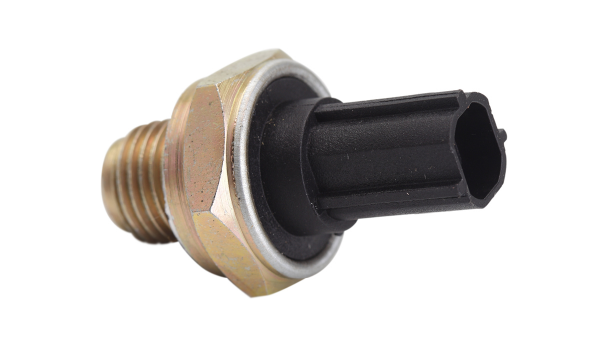
The biggest technology buzz in the auto industry is about self-guided vehicles
Perhaps the biggest technology buzz in the auto industry these days is about self-guided vehicles; the cars of the not-too-distant future that will include lane departure warning, forward collision warning, headlight control, traffic sign recognition and pedestrian detection.
It is getting the kind of attention that battery electric vehicles received five years ago, only this technology offers far greater potential to suppliers in terms of volume and value-added potential.
Suddenly, there is an arms race among automakers when it comes to autonomous cars. Unlike much other hopeful technology – fuel cells and such – driverless vehicles are feasible today and subject to mass appeal in the near future, since infrastructure is not an obstacle.
The stereo and colour cameras, long- and short-range radars and sophisticated software that make it all possible are likely to become the highest value automotive componentry of the next decade and so there is alsoan arms race taking place among some of the world’s largest suppliers, those with the deepest pockets.
Nissan last month said it planned to have self-driving cars market-ready by 2020. General Motors followed with a similar forecast and last week at the Frankfurt auto show Daimler announced the same goal for the end of the decade.
Effectively, self-driving cars are already here for Daimler, BMW and Audi, lacking only the regulatory conditions that would allow for road use.
The big electronics suppliers are out in full force. Continental is working on technology that will allow vehicles to drive themselves at speeds of up to 18 mph by 2016, and up to 36 mph by 2020.
Although Continental CEO Executive Elmar Degenhart declined to speculate last week, Conti and Google are reportedly discussing an alliance to equip the self-driving vehicles with roof-mounted radar that the search-engine giant is testing.
Continental and Google are said to be close to forming a partnership to develop advanced autonomous driving systems.
Continental did announce last week that it has a new agreement with IBM to work on data processing related to autonomous driving. The supplier is already working with BMW on technology that can deal with toll booths, road construction barriers and national borders.
Continental has been developing self-driving vehicle technology for several years and is widely considered to be the leader among suppliers when it comes to autonomous cars. This year alone, Conti is investing more than €100 million on the development of assisted-driving technology. According to Bloomberg, the company has 1,300 engineers at work on the project.
Continental executive Ralf Lenninger told the news service: “Our aim is fully automatic driving that allows the driver to watch TV.”
Other suppliers showcasing their technology at Frankfurt included Valeo and its new "Park4U" system that allows drivers to leave a car at the entrance of a parking lot and use a smartphone to direct the vehicle to park itself. In another demonstration area, Bosch showcased its Advanced Driver Assistance Systems.
TRW Automotive announced last spring that it would produce its scalable video camera, called the S-Cam, that will be used to support safety systems, at a plant in the United States.
The new S-Cam is the third generation of the equipment and will be available on models from five global automakers by the end of the year. TRW rolled out its first camera in 2008 for the Lancia Delta.
The third generation of TRW's system is due out for the 2016 model year. It will be capable of supporting adaptive cruise control and emergency steering systems, and other semi-autonomous features.
Bosch, of course, is positioned to be a major force in the hands-free driving wars. In a demonstration in April, Bosch showed a driverless car reverse into a parking spot as if by remote control.
Wolf-Henning Scheider, a member of Bosch’s board of management, said this year that the technology “is of high importance to us."
He added that automated cars are one of “the main trends in the next generation of cars.”
Suppliers are working on various niches in the autonomous driving spectrum. Qualcomm is at work on a system that will allow drivers to avoid pedestrians and cyclists. The portable device broadcasts the position of a pedestrian or cyclist. A properly equipped vehicle will receive the signal and warn the driver if a pedestrian or cyclist is in the vehicle’s path.
At the Frankfurt auto show last week carmakers were aggressively touting the benefits of automated vehicles and the potential market. Renault/Nissan CEO Carlos Ghosn said his company intended to lead on autonomous cars, but Daimler, BMW and Audi have a head start. Daimler also said last week it plans to start selling a self-driving car by 2020.
“We want to be the first to launch autonomous functions in production vehicles. You can be sure we will accomplish that in this decade,” said development chief Thomas Weber.
And its autonomous driving technology is already on the market. The new Mercedes-Benz S-class can maintain a distance to other cars in stop-go situations. The “Stop&Go Pilot” is backed by 12 ultrasonic detectors, five cameras and six radar sensors. Basically it is a traffic jam assist, the S-class can match the speed of the car in front of it, even coming to a complete stop and steering to stay in the lane.
As the technology moves down from cars like the S-class to the medium segment, vehicles suppliers ready with the hardware and software stand to be the big winners of the next decade.